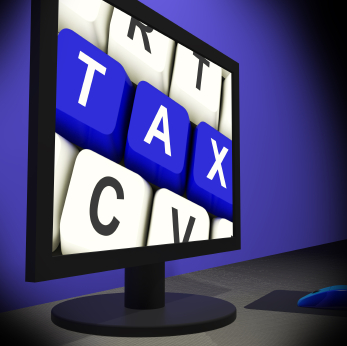
According to IRS Revenue Procedure 2013-13 in addition to claiming the traditional office in home (OIH) or home office deduction on Internal Revenue Service Form 8829 there is a new simplified option now you can consider effective January 1, 2013. Basically this new simplified method if selected allows you to claim essentially a “standard deduction” of $5 per square foot up to 300 square feet for the portion of the home that meets the normal OIH limitations. There are some rules and of course advantages and disadvantages of each method so I’ve done some research comparing the traditional method and the new simplified method.
Under the traditional method
You calculate the square footage of the home used for business and maintain records of actual expenses. The home office percentage of expenses are claimed on either Schedule C or Schedule F via Form 8829. Whatever portion of real estate tax and mortgage interest that is not deducted here can be deductible on Schedule A should you chose to itemize your deductions.
This is where it starts to get somewhat complicated.
1. Depreciation is calculated on the business portion of the home AND reduces your adjusted basis in the property. This allowable depreciation is taxed up to the amount of the gain when you go to sell your home and is taxed as ordinary income on the tax year of disposition or sale of the house.
2. The total deduction claimed in any given tax year cannot exceed gross income from business use of home less business expenses with the exception of real estate taxes and mortgage interest. In other words under ‘normal’ circumstances you cannot in the same tax year claim a loss on the Schedule C or F and take the OIH deduction with the only 2 exception. Those being allocated taxes and mortgage interest that if added can indeed create a loss on the Schedule C or F and allow the OIH expense.
3. Expenses in excess of the allowed deductions are carried over and allowed in the next year if the income test is met in the following year.
Normally I recommend against accounting for depreciation when calculating OIH for the year simply because it becomes mind numbing and confusing when you go to calculate your tax liability upon home sale necessitating many extra hours of time to correctly file your income tax return.
Under the simplified method
The deduction is $5 per square foot for 300 square feet total capping the total annual deduction at $1,500. With this method you can still claim 100% of the real estate taxes and mortgage interest on Schedule A – Itemized Deductions as you see fit but the depreciation deduction is not allowed. Depreciation allowed/allowable for the years the regular method was used is still taxed in the year of the sale as normal.
Deduction cannot exceed gross income from business use of home less business expenses meaning that the OIH expense will never create a loss on the Schedule C or F and OIH expenses in excess of the allowed deductions may NOT be carried over for following years. Also loss carryovers from a year in which the regular method was used may NOT be claimed in years in which the simplified method is being used. However these suspended regular method loss carryovers are carried over to the next year in which the regular method is used next.
You can choose either method for any year. The choice to use the simplified method is made by simply claiming the OIH deduction using the Simplified Method on a timely filed IRS Form 1040 Schedule C for the chosen year with basically the following five caveats:
1. Once a method has been chosen for a year, it cannot be changed to the alternative method for the year in question.
2. If the simplified method is used for a year, the depreciation for any LATER years that use the regular method must be calculated by using the appropriate optional depreciation table which is generally speaking a 39-year life, regardless of whether the optional depreciation table was used in the first year or not. The depreciation allowed is the amount that would be deductible in that year AS IF depreciation had been used in the Simplified Method years.
3. If you start using an OIH or change the size of the office during the year, the average square footage is used for the calculation of the OIH expenses. This average is calculated by averaging the monthly square footage amounts AND no month is considered to have more than 300 square feet. Also the taxpayer must have a qualified OIH for at least 15 days during the month.
4. If you have more than one qualified business use of the same home for a year and elect to use the Simplified Method you MUST use the Simplified Method for each qualified business use and the maximum square footage used for ALL of the businesses cannot exceed 300 square feet. You may allocate the deduction among the businesses in any reasonable manner, but never more to a business than that business’ applicable OIH square footage.
5. If you are an employee you cannot use the Simplified Method if you receives advances, allowances, or reimbursements for expenses related to the OIH from your employer.





















Recent Comments